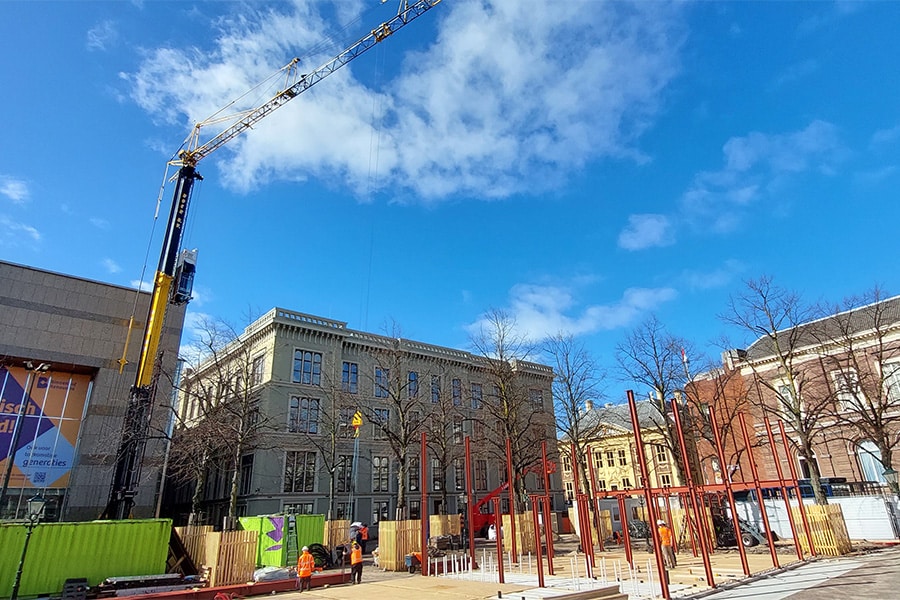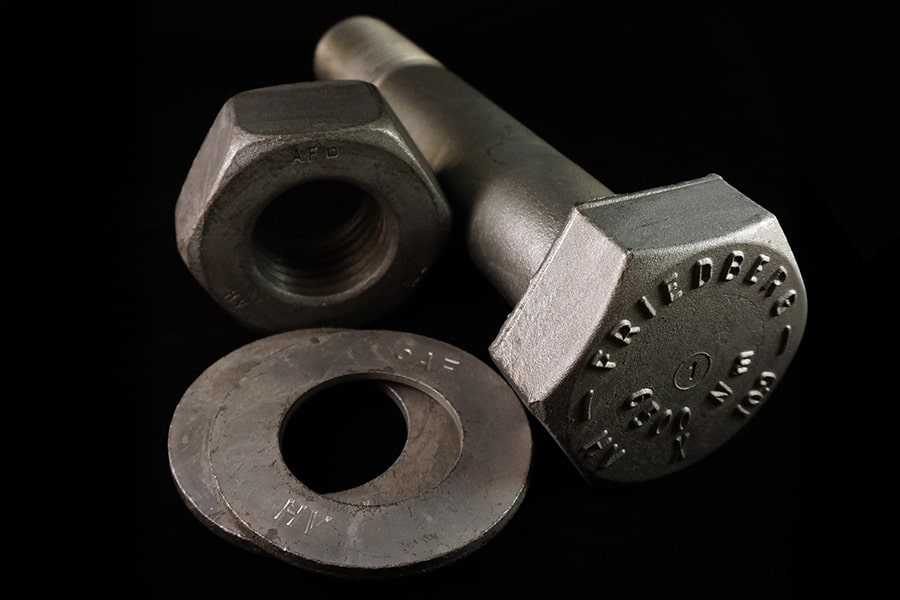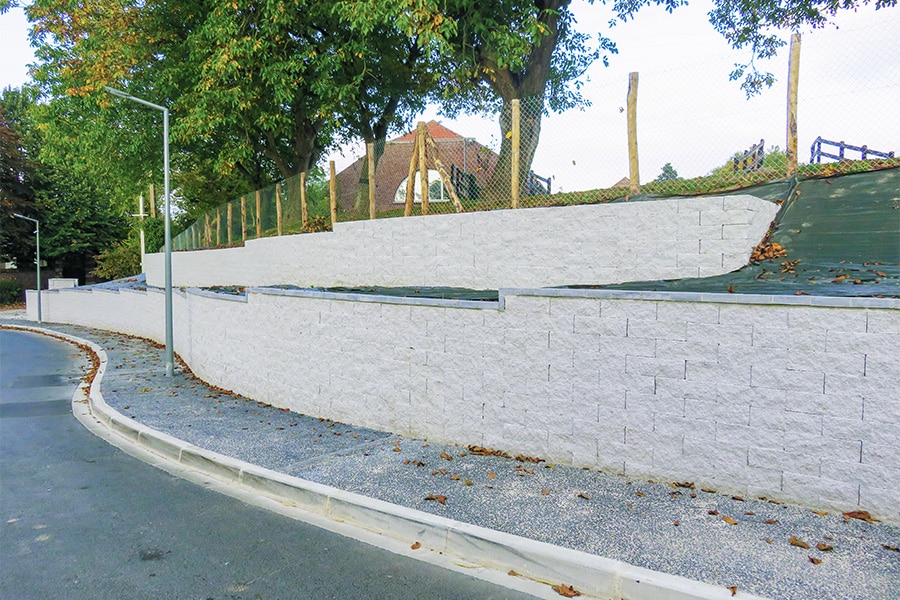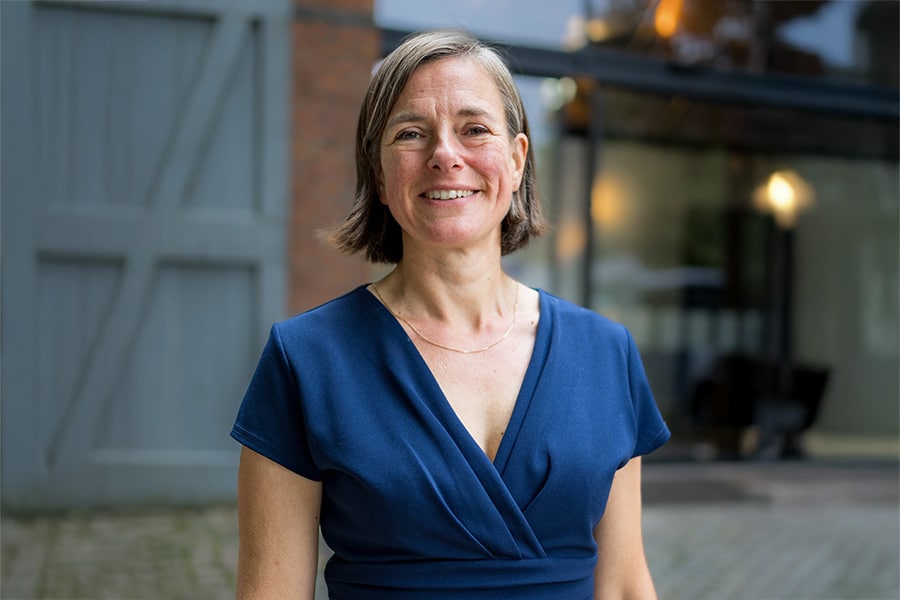
World first: Camp C first to print an entire home in one piece
At Camp C, the provincial Center for Sustainability and Innovation in Construction, in Westerlo, a house was printed with Europe's largest 3D concrete printer. The house measures ninety square meters and was printed in one piece with a stationary printer. This a world first.
The first 3D printed demo house in Flanders is a reality. You can find it on the grounds of Kamp C in Westerlo. The house consists of two floors, is ninety square meters in size and eight meters high. This is the size of an average Kempen row house.
"What is unique is that we printed the house in one whole with a stationary 3D concrete printer," said Emiel Ascione, project manager at Camp C. "The houses that have already been printed around the world have only one floor and, moreover, are often printed in parts at the factory and assembled on site. We printed the entire building envelope as one unit on site."
The house was printed as part of the European project C3PO with support from ERDF (the European Regional Development Fund). With this achievement, the project partners aim to warm up the construction industry to implement 3D concrete printing in their construction techniques.
Kathleen Helsen, deputy for Housing and president of Kamp C "There is already a lot of interest from the construction industry. 3D printing in construction is booming all over the world. Countless possibilities such as printing temporary housing to complete apartments are already being implemented, but in Flanders this is new. However, we face incredible challenges in construction: the consumption of materials and energy must be reduced, we must work on CO2 reduction, the waste stream must be smaller, there is an increasing demand for quality and affordable housing, and so on. We at Camp C believe that new technologies, such as 3D concrete printing, can help answer these. That's why we created this unique location on our property where companies from the construction industry together with research and educational institutions can fully experiment with 3D printing."
Three times as strong
The printed house is three times stronger than a house built with quick-build bricks. "The compressive strength of the material is three times higher than the classic quick build brick," explains Marijke Aerts, project manager at Camp C. This first house is a test building and it will be examined whether the strength is maintained over time.
In addition to the fibers contained in the concrete, only minimal shrinkage reinforcement was used. The printing technology eliminates the need for concrete formwork. This saves an estimated 60 percent in materials, time and money. Thus, in the future, a house could be printed in two days. Adding up all the printing days, the house at Camp C was printed in barely three weeks.
Demo house
The house is a demo building that aims to demonstrate the techniques and possibilities of 3D printing as much as possible. "An overhang was printed, there are strongly curved walls in it, there are different wall types in it, ... Solutions were also introduced for the classic building nodes so that they are completely cold bridge free," Ascione explains. "The house will be expanded into a low-energy house equipped with all comforts: there is floor and ceiling heating, special facade solar panels and a heat pump are installed, and there will be a green roof."
"When we started construction, we did not know what function the building would have, the goal was to print the area, height and shape of an average contemporary house, but as a demo building with multifunctional possibilities. This is a principle of circular building. It can function as a home, meeting room, office or exhibition space. The building can be visited by appointment starting in September," said Piet Wielemans, architect at Kamp C.
Project
The house is part of the European project C3PO. This project aims to accelerate the entry of this innovative technology in Flanders. Eight partners, both from the worlds of science and business, are joining forces: Beneens, ETIB/CONCRETE HOUSE, Groep Van Roey, Thomas More, Trias architects, Ugent and Vicré. Saint-Gobain Weber is also collaborating on the project.
This article is part of the C3PO project. From the ERDF project C3PO ('Co-creation: 3D Printing with Enterprises') the partners could count on 668,320 euros of support from Europe. The project fits into the GTI Kempen (GTI stands for Targeted Territorial Investment, an integrated strategy for a certain area, where different European funds and programs are bundled).



